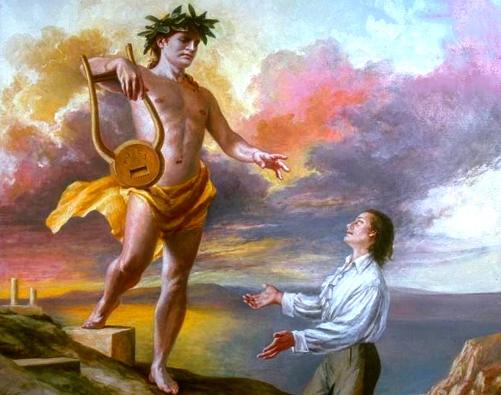2.1.4 Ignacio Valdés Machuca (1792 – 1851), his contributions to Cuban poetry

Ignacio Valdés Machuca, who often used the pseudonym Desval, was the author of the first collection of poems published in Cuba, “Ocios poéticos,” in 1819. He was a poet of language, a lover of the musicality of words and rhetoric, of neoclassical origin but also linked to the first Romantic generation. He is considered our first aesthetician in literature.
In 1820, he founded the literary magazine “La lira de apolo” (The Lira of Apollo), in collaboration with Joaquín Llaverías. This was the first publication whose text was entirely in verse, which explains the rise to which poetry had been rising in society. He also composed the play “La muerte de Adonis” (The Death of Adonis), closer to drama, though imbued with poetic inspiration and also written in verse.
It is true that in the poet mimesis prevailed over originality, which is evident in his own collection of poems “Ocios poéticos”, which alludes to the title of a book by the Spanish poet José Cadalso (1741 – 1782), entitled “Ocios de juventud” and somewhat imitates the romanticism of this author, whom some consider the precursor of Spanish romanticism, still imbued with baroque turns.
Another of his collections of poems, “Cantata” from 1829, possesses elements very similar to the poetics of the Frenchman Jean-Baptiste Rousseau. It incorporates constant allusions to Greco-Roman mythology, but some of the poems it contains, such as “The Baths of Marianao,” express the island’s nature through a mythological veil, a leitmotif that would continue to germinate in later poetics.
One of the least explored lines of Ignacio Valdés Machuca’s poetry is that related to eroticism, which oozes through certain interstices of his work. For this reason, Víctor Fowler includes it in his interesting anthology, “The Eternal Dance,” which traces the way in which desire was expressed in national literature, with gradations and distinctive characteristics of each author, but not without common and enduring, albeit mutating, traits. It includes an excerpt from “The Death of Adonis”:
ADONIS
“The dawn is not so pretty when it comes out”
reclining on her enriched throne
of fragrant roses, nor do I love it
How I love you when I look at you:
then, yes, then the burning
that my heart is continually burning
They light up with your sight, and a new fire
I am inspired by your beautiful attractions;
your voluptuous eyes, if they look at me,
They give fuel to my desires, and the delirium
at times it increases, without being able to
my loving heart resist it.
If you do not grant me the flattery,
that it will be necessary to die of love;
If you do not quench these flames, I perish
from my great passion to the hard edge:
let us imitate the ivy that entwines itself,
with the haughty elm, my master.”
Even though imitatio predominates in his verses, it should not be ignored from the panorama of Cuban lyric poetry during a period that was certainly not very fruitful, especially because it contributed to establishing the need for formal care and polishing of verse—from the perspective of poetry as artifice—but so important for the artistic development of the genre. Likewise, elements that foreshadow nationality emerge in an incipient manner from its perspective anchored in nature.








